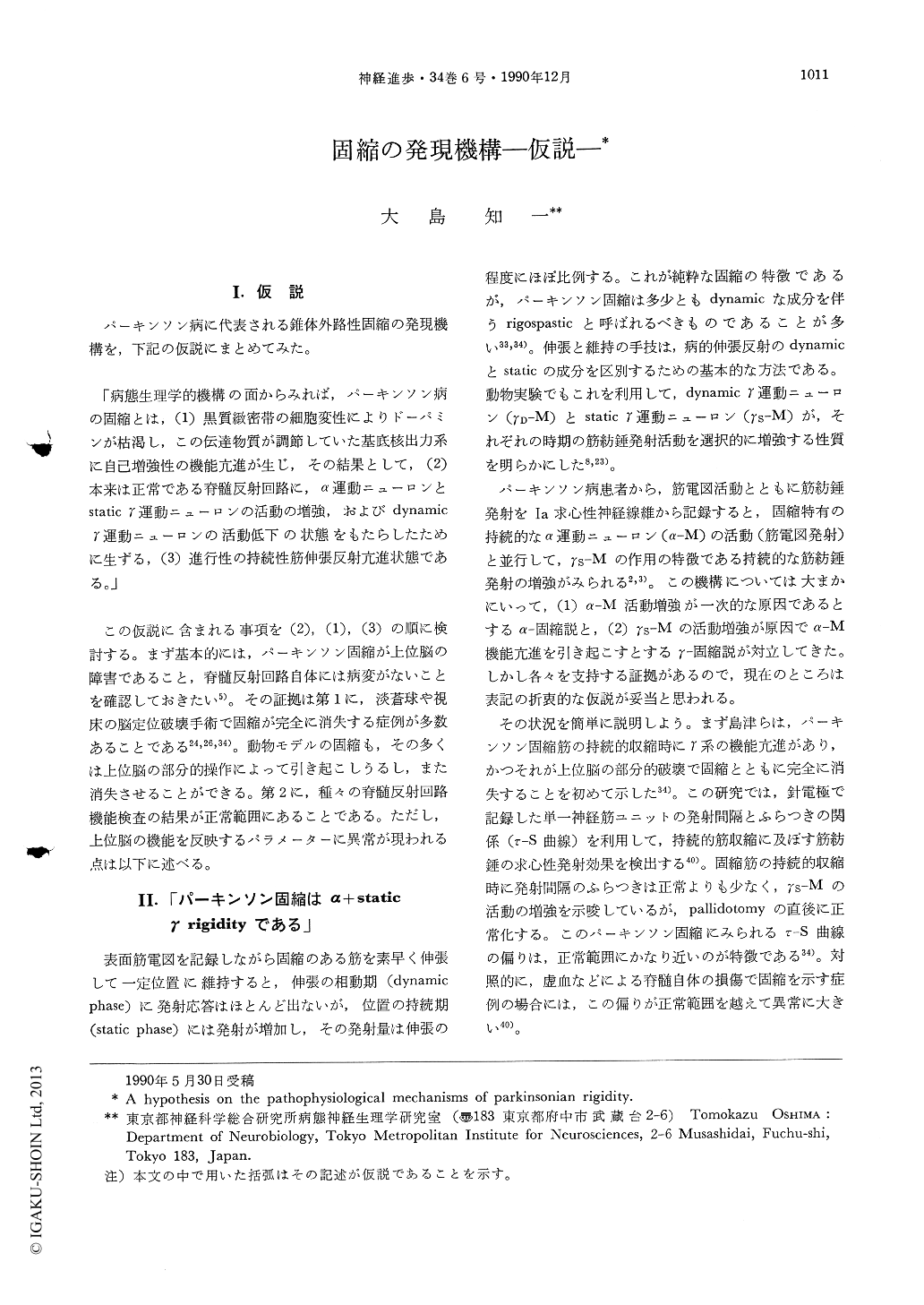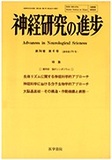Japanese
English
- 有料閲覧
- Abstract 文献概要
- 1ページ目 Look Inside
I.仮説
パーキンソン病に代表される錐体外路性固縮の発現機構を,下記の仮説にまとめてみた。
「病態生理学的機構の面からみれば,パーキンソン病の固縮とは,(1)黒質緻密帯の細胞変性によりドーパミンが枯渇し,この伝達物質が調節していた基底核出力系に自己増強性の機能亢進が生じ,その結果として,(2)本来は正常である脊髄反射回路に,α運動ニューロンとstaticγ運動ニューロンの活動の増強,およびdynamicγ運動ニューロンの活動低下の状態をもたらしたために生ずる,(3)進行性の持続性筋伸張反射亢進状態である。」
A hypothesis is set forth on the neural mechanisms that generate parkinsonian rigidity. It is pro-posed that parkinsonian rigidity is the exaggerated tonic stretch reflexes of progressive nature, caused by accelerated activities of spinal α- and static γ-motoneurons. It stems from the neuronal loss in the substantia nigra pars compacta (SNC) and the resultant dopamine depletion, which accelerates the output activities of the basal ganglia in a self-augmenting manner to be conveyed to the spinal cord.

Copyright © 1990, Igaku-Shoin Ltd. All rights reserved.


